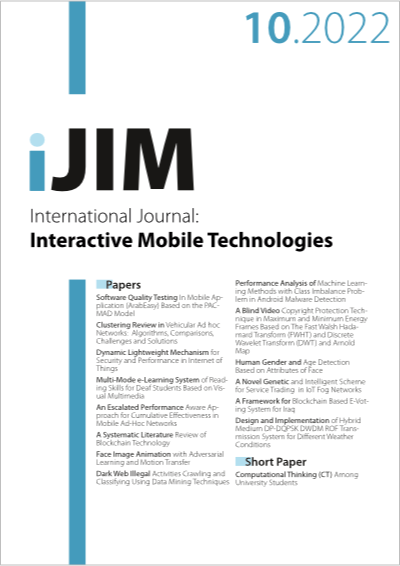Clustering Review in Vehicular Ad hoc Networks: Algorithms, Comparisons, Challenges and Solutions
DOI:
https://doi.org/10.3991/ijim.v16i10.29973Keywords:
VANET, Clustering Algorithms, Performance ParametersAbstract
The Vehicular Ad-hoc Network (VANET) represents a new future for dynamic information dissemination between societies. VANET has a wide range of applications in a variety of aspects, including Intelligent Transportation Systems (ITS). VANET has some characteristics, like highly dynamic topology and intermittent connections. These characteristics lead to untrustworthy information transmission in VANET. Vehicle clustering is an efficient approach to improve the scalability of the network and connection reliability. The performance of the clustering is also affected by VANET characteristics. This article provides a comprehensive description of VANET clustering algorithms. The most notable clustering algorithms introduced between 1999 and 2021 are reviewed. A complete survey on clustering in VANETs is provided based upon the clustering process. The clustering process in most algorithms is explored in the aspects of CH selection metrics, cluster formation, and cluster maintenance. The clustering techniques based on some parameters like stability, convergence, overhead, and latency are compared. Some of the most common problems, as well as the approaches employed to solve them, are also discussed. Also, the performance parameters which evaluate the clustering approaches are summarized.
Downloads
Published
How to Cite
Issue
Section
License
Copyright (c) 2022 mays kareem jabbar, Hafedh Trabelsi

This work is licensed under a Creative Commons Attribution 4.0 International License.



